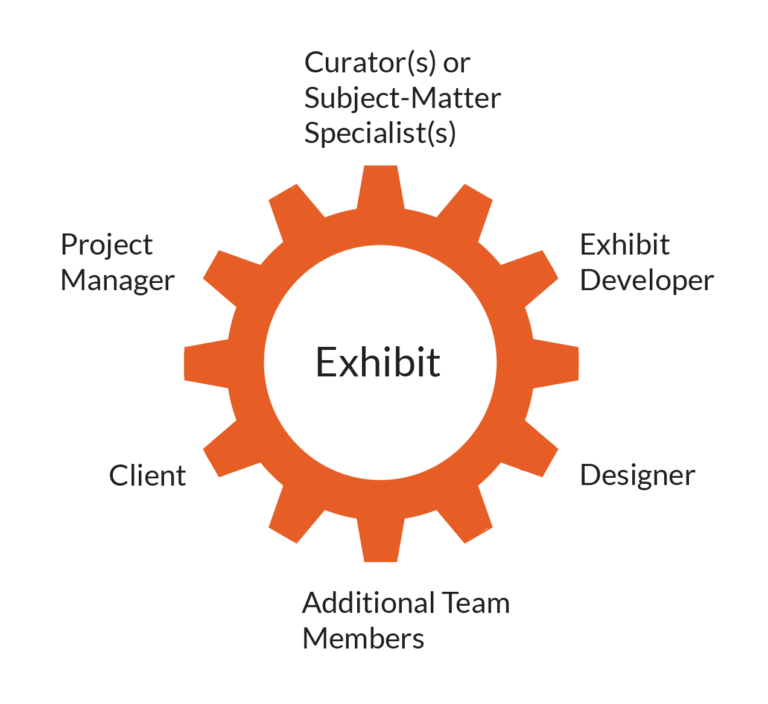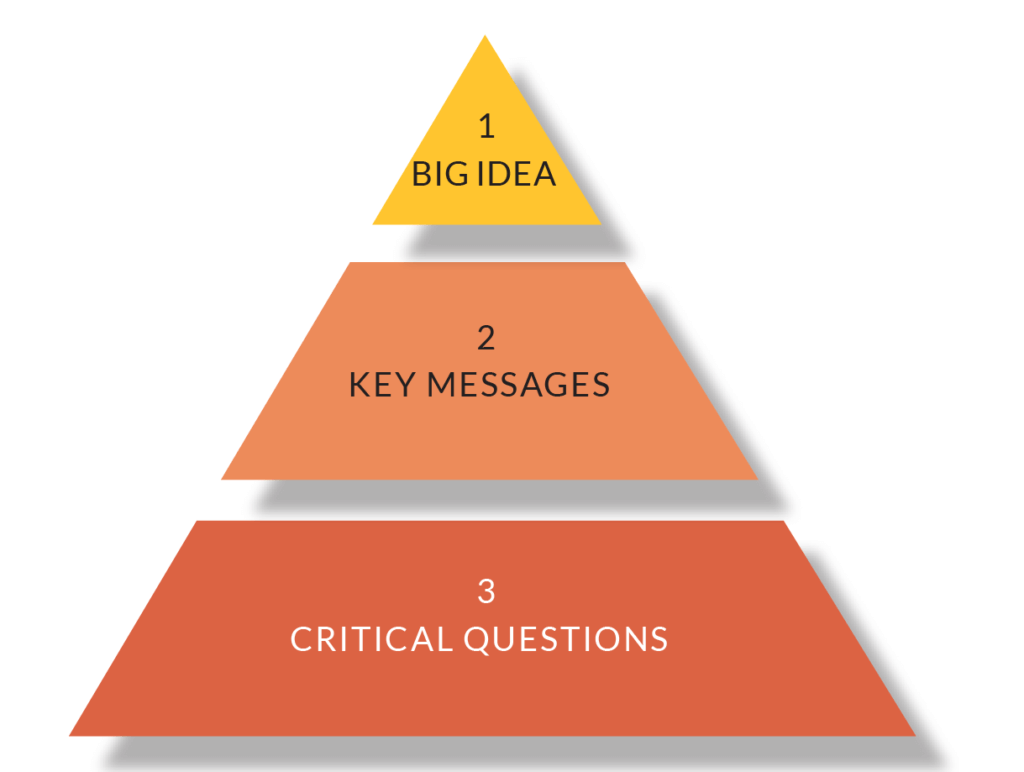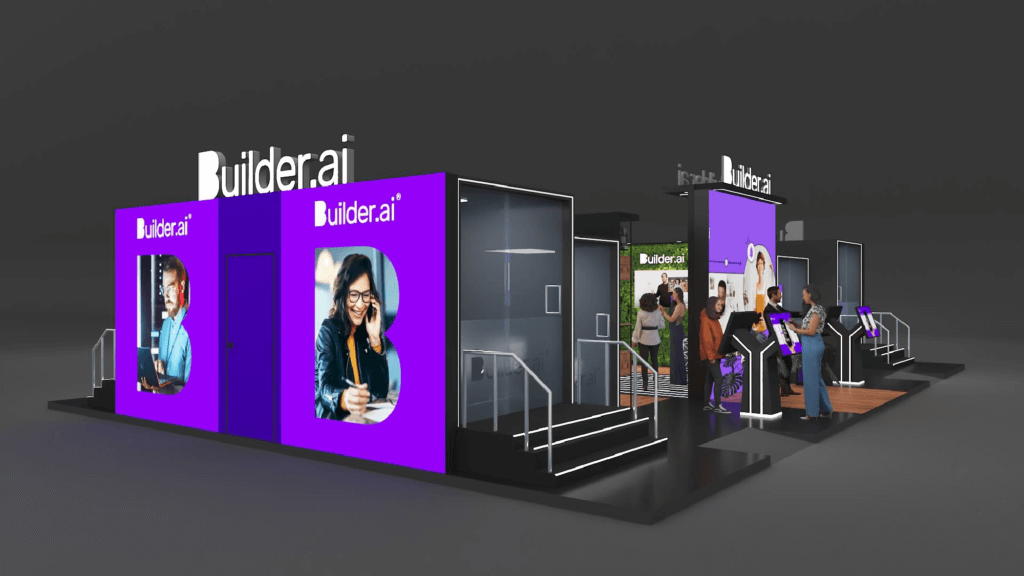THE EXHIBIT DEVELOPMENT TEAM
An exhibit development team is made up of several key players. Each person comes to the project with his or her own unique skills and perspectives and fulfills certain roles and responsibilities. Together, they strengthen the exhibit by providing varied points of view and new insights.
Exhibit teams are not restricted to the roles listed here.
For example, an exhibit team might include a museum educator, a program coordinator, or any other staff relevant to the project. But SIE recommends keeping the core team small to keep meetings manageable and streamline the decision-making process.
Each team member may represent a larger group of specialists or stakeholders, with whom they meet at key stages throughout the project to provide updates and gather feedback.

ROLES AND RESPONSIBILITIES
The client or project “owner” advocates for the organization. S/he communicates with key stakeholders, facilitates timely decisions, and ensures that the exhibit reflects the organization’s mission and vision. S/he is usually the one who oversees the exhibit’s budget.
The curator or other subject-matter specialist (such as a scientist, historian, etc.) advocates for the subject matter. S/he provides research and expertise, selects assets (including objects, images, and quotes), and ensures that the exhibit’s content is accurate.
The project manager advocates for the project and the team. S/he guides the project through its various phases from concept to completion, determines if any additional staff or contractors are needed, and ensures that the exhibit stays on schedule and on budget.
The exhibit developer advocates for the visitor experience and the story. S/he helps define the exhibit’s messaging, determines interpretive strategies, and ensures that the content is clear, concise, and compelling. The exhibit developer may be “deputized” by the subject-matter expert to assist in finding images, quotes, stories, etc.
The designer advocates for the physical and sensory design of the space. S/he shapes the exhibit’s design and ensures that it communicates its messages effectively and is engaging and accessible to all visitors.
Additional team members may include education and programming staff, media and interactive developers, and other specialists.
THE EXHIBIT DEVELOPMENT PROCESS
The exhibit development process has several distinct phases, each with its own content deliverables. Not every project includes every phase. This document focuses on the stages leading up to final design, at which point the exhibit enters the fabrication phase.
The Interpretive Master Plan phase identifies the exhibit’s stakeholders and target audiences, outlines key goals and objectives, establishes an interpretive hierarchy (see p. 7), and provides a road map forward for launching a new exhibit. Content deliverables in this phase include the interpretive master plan.
The Concept Design phase develops a single conceptual- level solution for content and design. Content deliverables in this phase include the content brief, which provides an overview of the exhibit and its main messages and identifies potential themes, subthemes, and interpretive strategies, such as interactives and media elements.
The Schematic Design phase creates a framework for the exhibit’s content. Content deliverables in this phase
include the outline, which breaks content into sections and subsections, and identifies key objects, images, quotes, and other elements to be included.
The Design Development phase transforms content from an outline to a final script and articulates the design. Content deliverables in this phase include the exhibit script, which weaves content into a narrative form, incorporating object labels, image captions, and credits. Depending on the exhibit, there may be multiple rounds of drafts and edits.
The Final Design phase finalizes the script, design details, and graphic layouts into a production-ready biddable package. Content deliverables in this phase include the final copyedited and proofread design files (graphic layouts) ready for production.

CREATING AN INTERPRETIVE HIERARCHY
When planning a new exhibit, SIE recommends creating an interpretive hierarchy to focus the exhibit’s main messages and provide a structure for content. This is generally done during the Interpretive Master Plan phase

Exhibits start with a “big idea.” This is the overarching message that visitors should understand upon leaving the exhibit. It is the basis for all the content presented.
The key messages are a small number of take-away statements that directly support the big idea. They provide a conceptual framework that drives content development.
The critical questions support the key messages and shape the content goals for the experience. These are the questions that the exhibit should answer for visitors.
Once you have established an interpretive hierarchy, it’s time to decide how to organize the exhibit. Should the content be presented chronologically or thematically? How many sections are needed to tell the story? What are the potential themes and subthemes? These are questions that should be considered as the project enters the Concept phase.
VISITOR PREFERENCES
The most important thing to keep in mind when developing an exhibit is your audience. Who is the exhibit intended
for and how will you reach your audience effectively? Visitors come to museums with their own interests, needs, and desires. They learn in different ways and are drawn to different types of content. The Smithsonian’s IPOP (Ideas, People, Objects, Physical) model categorizes visitors according to their preferences for experiences based on ideas, people, objects, and physical interaction. Successful exhibits incorporate all four categories.
- Ideas: Visitors seeking conceptual and abstract thinking
- People: Visitors seeking emotional connections
- Objects: Visitors seeking visual language and aesthetics
- Physical: Visitors seeking multi-sensory experiences
INTERPRETIVE TOOLS
The exhibit development team has multiple interpretive tools at its disposal. Content can be expressed in many ways, not just with words. The team should consider all available options when deciding how best to present an idea. Whatever tools you use, remember to leave room for the visitor to reflect. Exhibits are full of stimuli and can become overwhelming with too much content.
Objects are what make exhibits unique. They lend authenticity and presence to exhibits.
Images provide visuals and illustrate ideas and concepts that may be difficult to explain in words. These include photos, maps, illustrations, charts, diagrams, etc.
Media elements, including video and audio presentations, add additional senses to the exhibit and help bring the content to life.
Interactives, including electromechanical and digital interactives, allow visitors to participate in the exhibit in a hands- and minds-on way and learn by doing.
Models and tactile elements allow visitors to see and/or touch things that would not otherwise be accessible. Scale models enable visitors to interact with very large or small objects in new ways. A large object, such as a building or space shuttle, can be seen in its entirety. Conversely, the complexity of a tiny organism can be shown in an enlarged scale model.
Text is a key element, but it’s important to remember that it’s just one of many tools. Text is most effective when it’s used strategically and graphically. Exhibits are not books on a wall. They should use all three dimensions of the space to tell the story.

